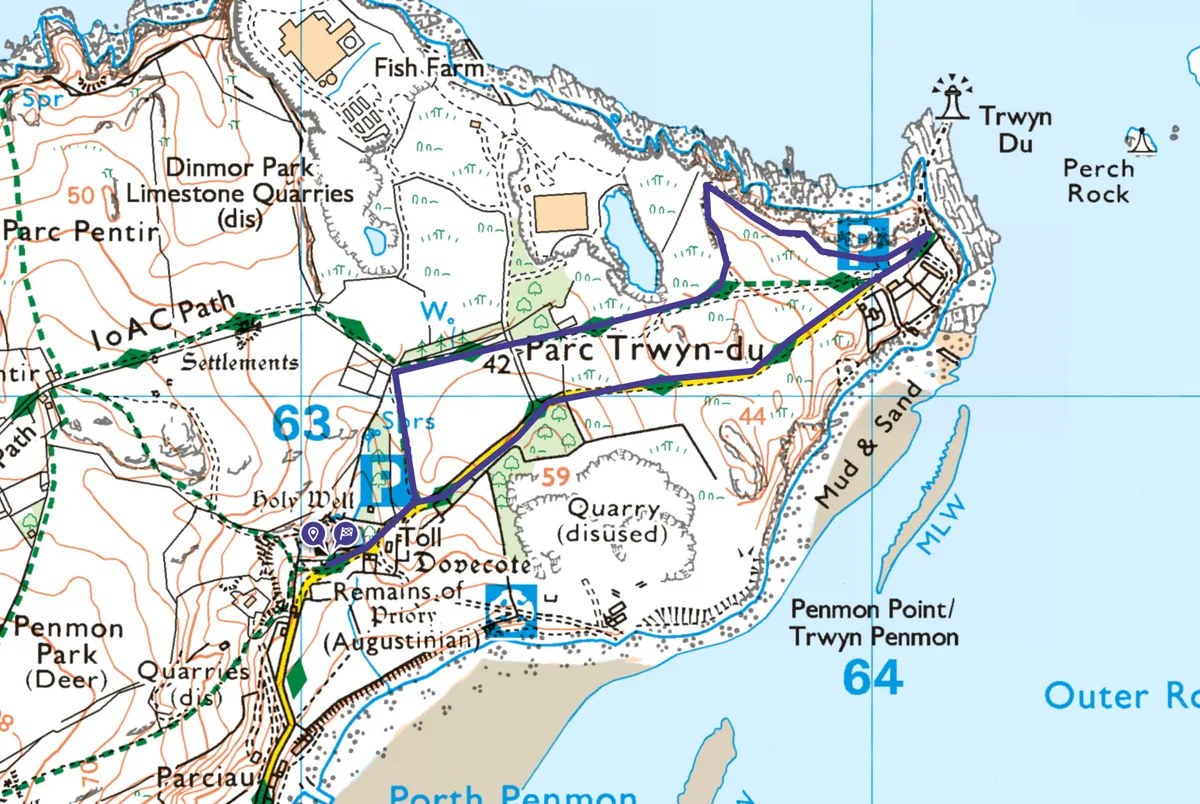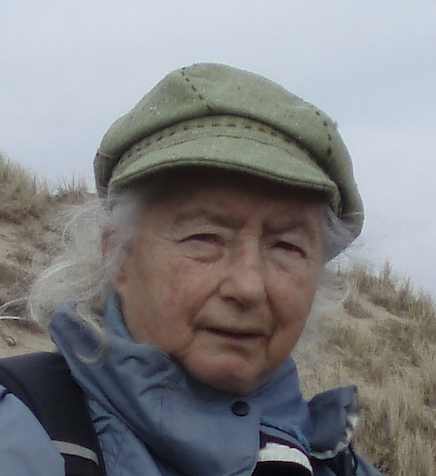Located on the eastern tip of Anglesey overlooking Conwy Bay, Penmon Point offers glorious views of Snowdonia’s mountains and is also a great place for watching seabirds and those on migration.
Half a mile across the sound is Puffin Island, a breeding and roosting site for many seabirds – although few puffins breed there nowadays.
Trwyn Du lighthouse on the rocky shore of Penmon Point was built in 1838 after the paddlesteamer Rothsay Castle, on a trip from Liverpool to Beaumaris, wrecked on Dutchman Bank. The former coastguard cottages date from this time, while the Pilot House Café occupies three former lighthouse pilots’ cottages.
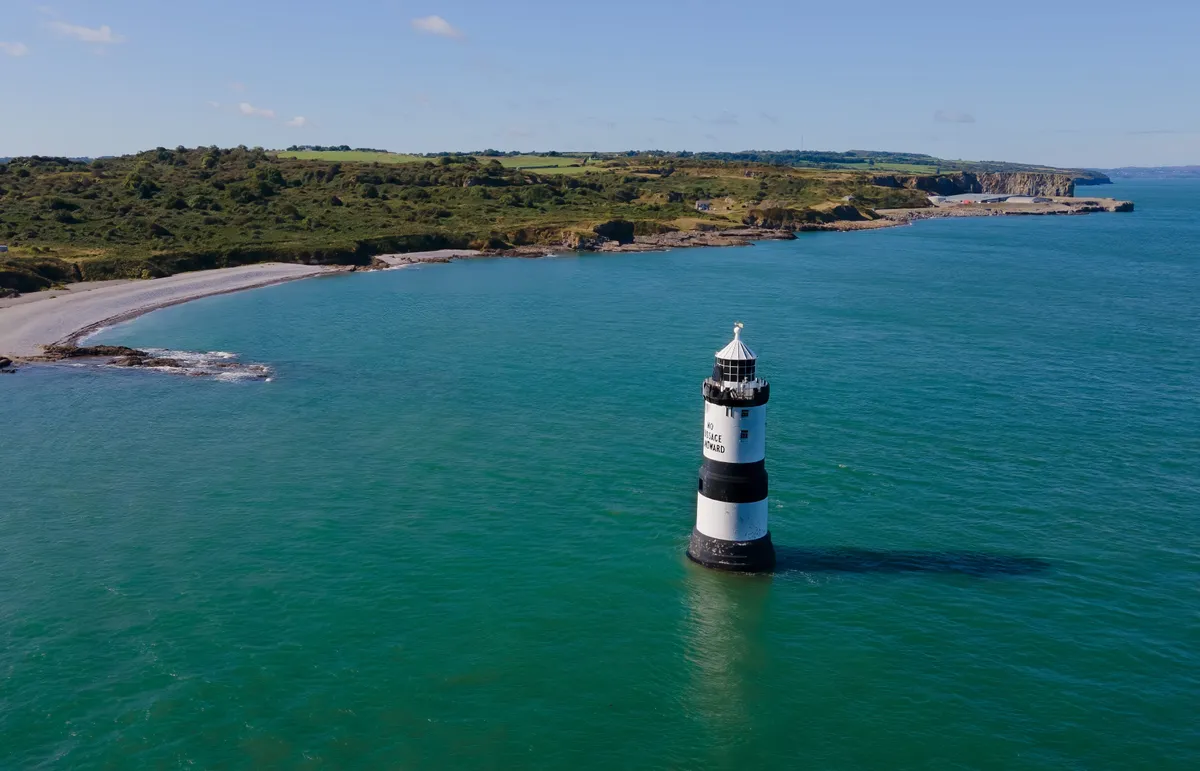
Red-legged resident black guillemots breed along this rocky coast and, throughout the year, are often seen shallow diving around Penmon Point. Here, cormorants and shags pose on large rocks with their wings open to dry. On the shore, migrant turnstones from Scandinavia turn over pebbles and seaweed with their beaks in search of food. Resident oystercatchers open molluscs on stones, while solitary rock pipits search for flies and periwinkles in the seaweed.
Fieldfares and redwings on migration from Scandinavia take shelter in the copse and feast on the berry bushes. Resident finches forage in the fields and stonechats perch on heathland bushes as ravens croak overhead.
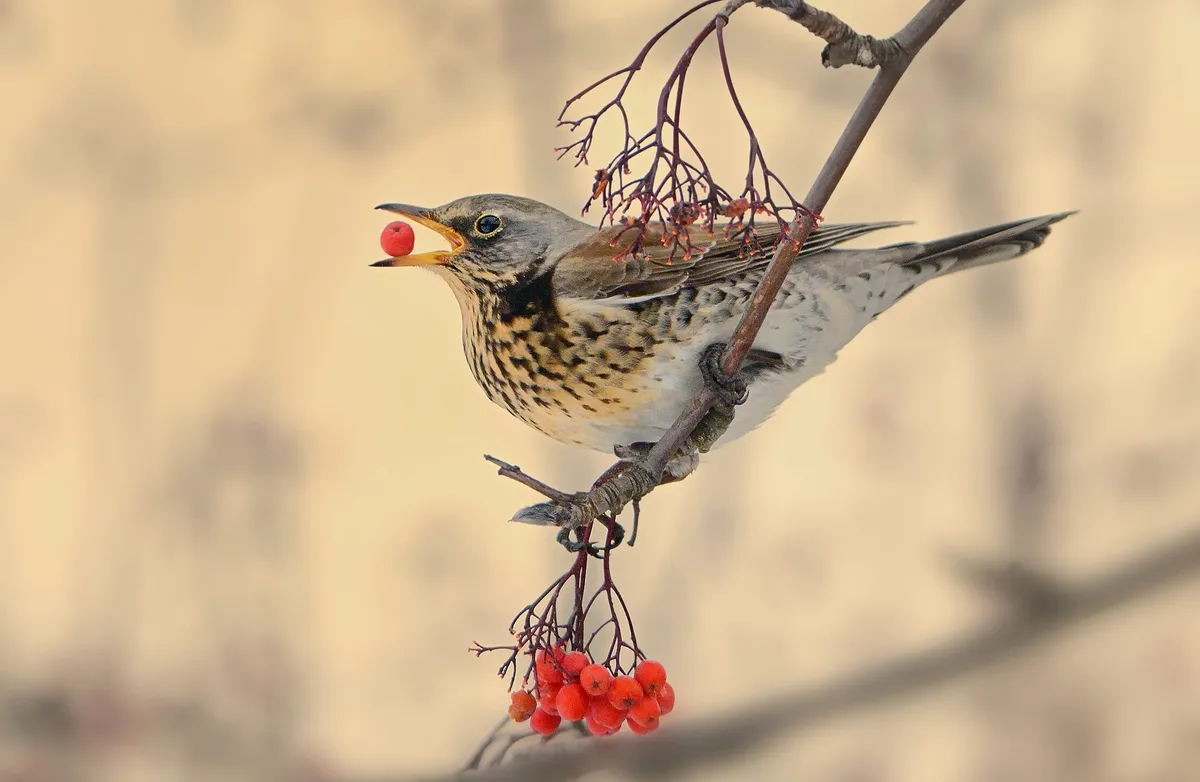
Penmon Point walk
1.7 miles/2.8 km | 1 hour | easy
1. Roman remains
Start your walk at the ruins of Penmon Priory. Head towards the 17th-century dovecote built to hold about 1,000 pigeons. On the opposite side of the road, a path leads to a monastic fish pond and St Seiriol’s holy well. Sparrows, finches and tits take shelter in the bushes. Return to the road, turn left, pass a cottage on the right and climb a stile on the left. Head towards a wall and turn right to emerge on a lane.
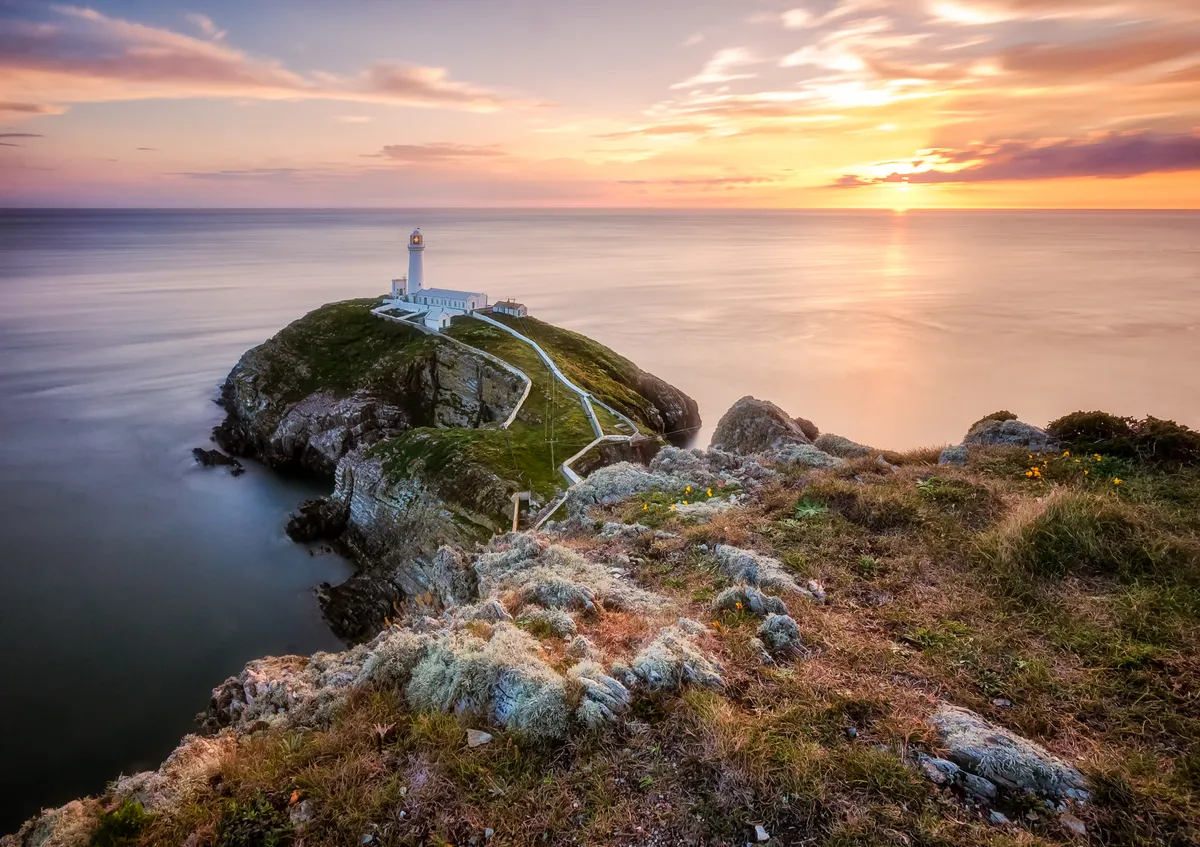
2. To the sea
Bear right but soon turn left on the coast path through a field, trees and scrub where goldfinches feed on thistles. Pass through a more open area with hawthorn, blackthorn and rowan bushes – a good area for fieldfare spotting – and go left at a fork in the path to the shore.
3. Eiders and divers
Grey seals, harbour porpoises and dolphins can be seen in the sound. Walk above the low cliffs towards the coastguard cottages while watching the water for seabirds, including eiders and red-throated divers. Near the edge of the sea, plump purple sandpipers hunt for periwinkles and whelks. The lane at the cottages will take you back to the priory.
Penmon Point map
Penmon Point walking route and map
